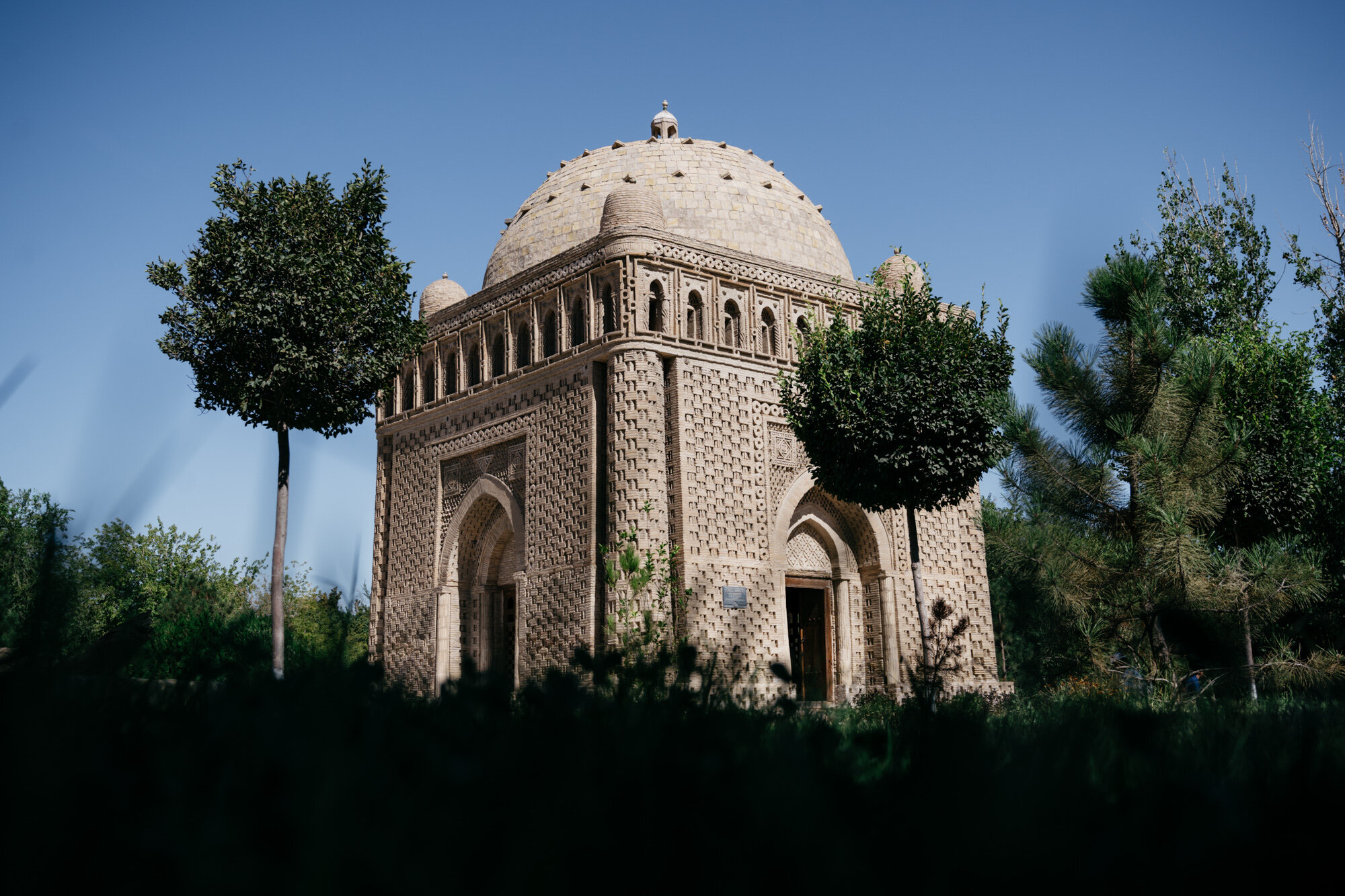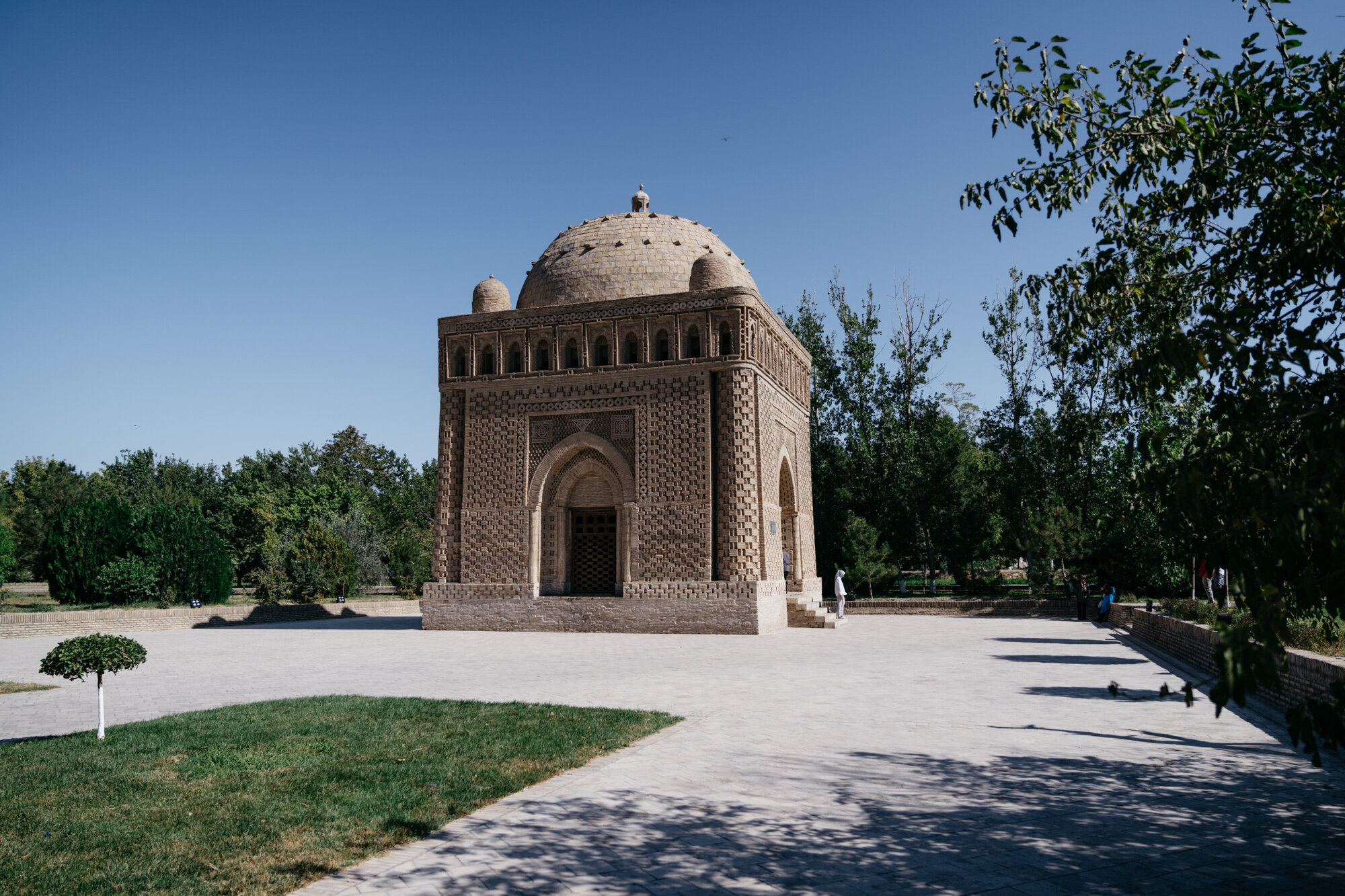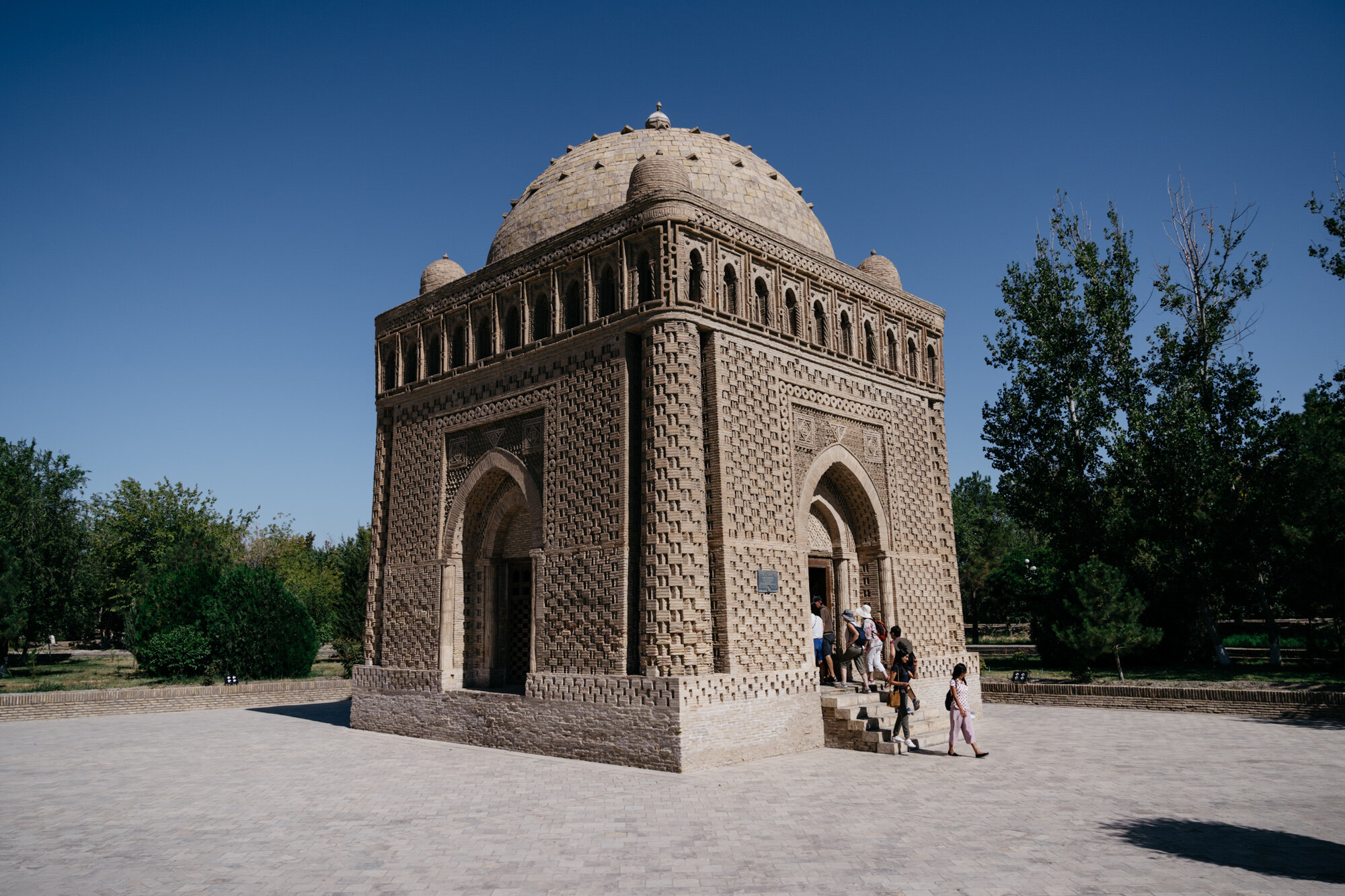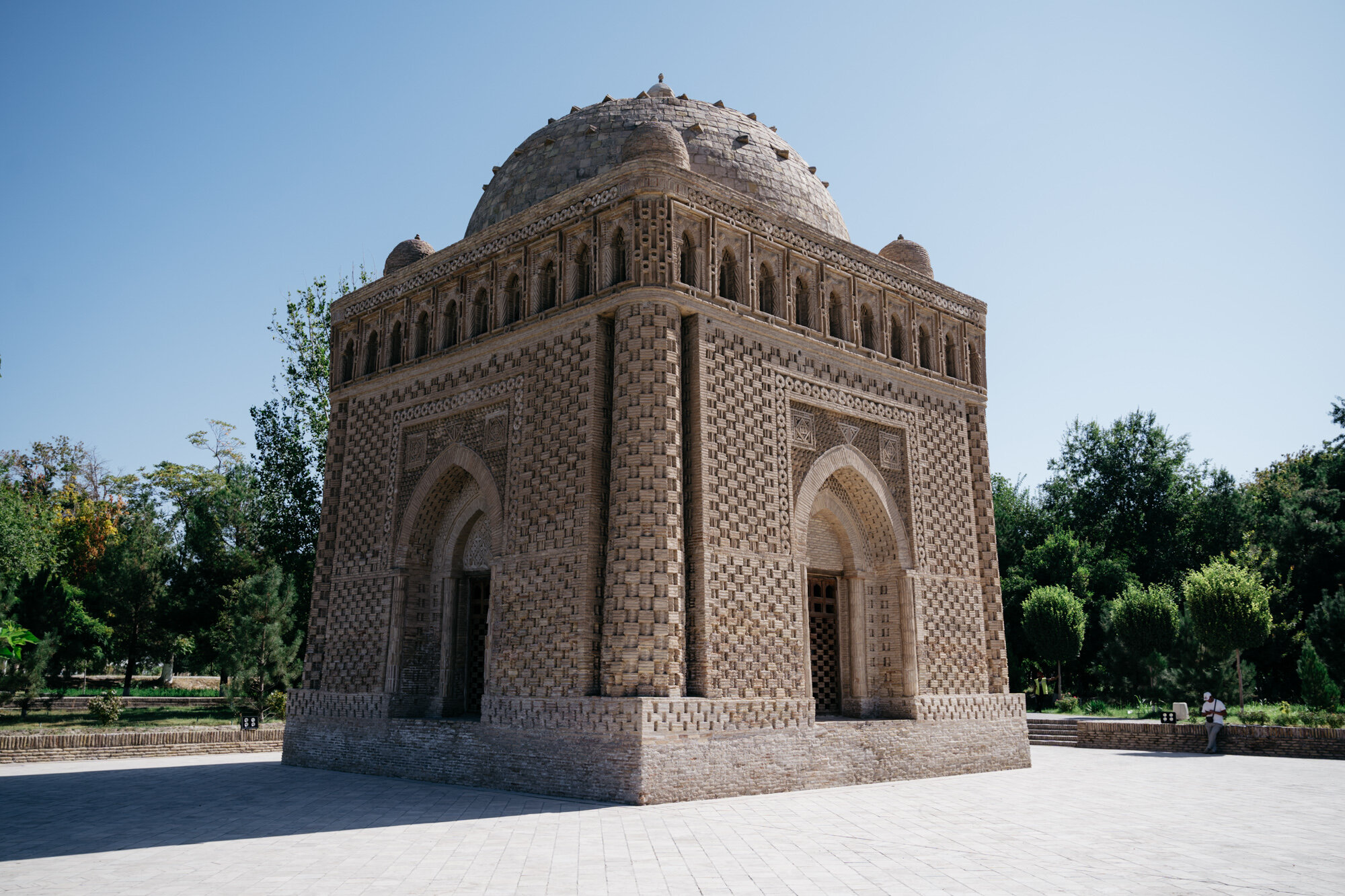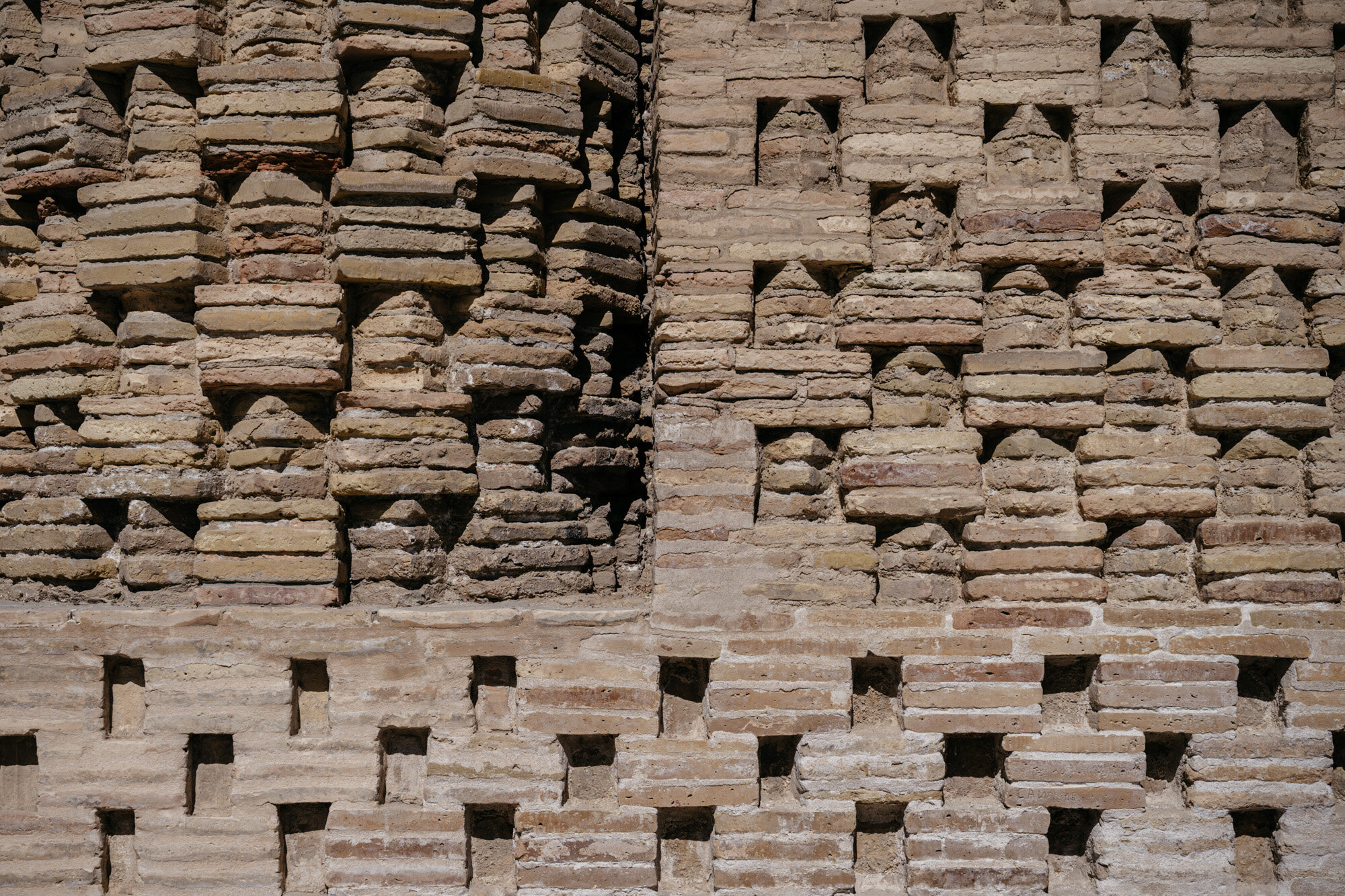Memories of the Samanid Mausoleum in Bukhara
This mausoleum dates back to the 10th century when the Samanid dynasty ruled Bukhara and much of modern Afghanistan, Iran, Uzbekistan, Tajikistan, and Kazakhstan.
It was built as the resting place of the powerful and influential Islamic Samanid dynasty and is the only surviving monument of that dynasty.
The mausoleum is considered ‘one of the iconic examples of the early Islamic architecture and is known as the oldest funerary building of the Central Asian architecture. Perfectly symmetrical, compact in its size, yet monumental in its structure, the mausoleum not only combined multi-cultural building and decorative traditions, such as Sogdian, Sassanian, Persian and even classical and Byzantine architecture, but incorporated features customary for Islamic architecture – a circular dome and mini domes, pointed arches, elaborate portals, columns and intricate geometric designs in the brickwork (Wikipedia).’
When the Mongol hordes reached Bukhara, the shrine was spared from their destruction as it had already been buried in mud from flooding. The site was only rediscovered in 1934 by a Soviet archeologist and required two years of excavation.
When I posted this on Instagram in September 2019, I received a beautiful message from Azeema Nur, a photographer and Bukharan who currently lives in California, about her childhood memories of this mausoleum which I would like to share here. She wrote of the mausoleum:
Thank you for this! A Bukharan native, my grandmother used to bring me to this mausoleum every Saturday for her micro-pilgrimage.
We would walk for an hour to get there, then quietly pray, while circling the mausoleum three times, concluding each circle by kissing the wall and gently touching it with our foreheads.
A non-believer, I can not help but still do it, when I find myself there. 30 years later.
